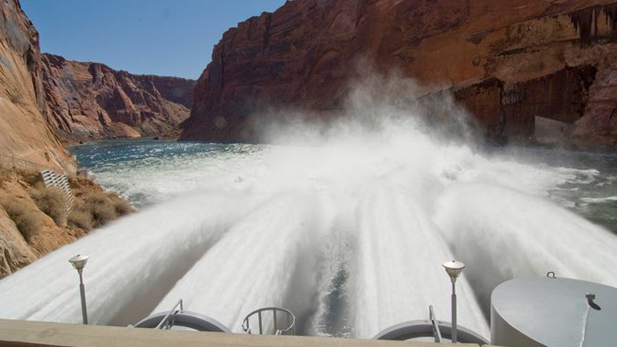 Glen Canyon Dam.
Glen Canyon Dam.Arizona Science Desk
An experimental release of water began Monday, Nov. 7 at Glen Canyon Dam. The artificial flood will rebuild sandbars and improve wildlife habitat on the Colorado River.
The experimental flood will release a peak of 36,000 cubic feet of water per second over the next four days. That’s two to six times the volume of normal flows through Glen Canyon Dam.
Rob Billerbeck is Colorado River Coordinator for the National Park Service. The dam traps sediment that used to move down the river, he said.
“So most of the sediment that exists below the dam comes in via the Paria River,” he explained. “This high flow would redistribute that sand or sediment onto beaches and sandbars downstream.”
Sandbars provide wildlife habitat and places for hikers and river runners to camp. The flood will also scour out vegetation and create pools for native fish.
Marlon Duke of the U.S. Bureau of Reclamation says high-flow experiments like this one have to be coordinated with hydropower demand.
“In addition to pushing as much water through the power plant as we can, we’re also going to open the bypass tubes and push water through there to get us to that 36,000 cubic feet per second,” Duke said.
Experimental floods have occurred on the river since 1996. They’re included in a management plan released last month that will guide dam operations for the next 20 years.

By submitting your comments, you hereby give AZPM the right to post your comments and potentially use them in any other form of media operated by this institution.